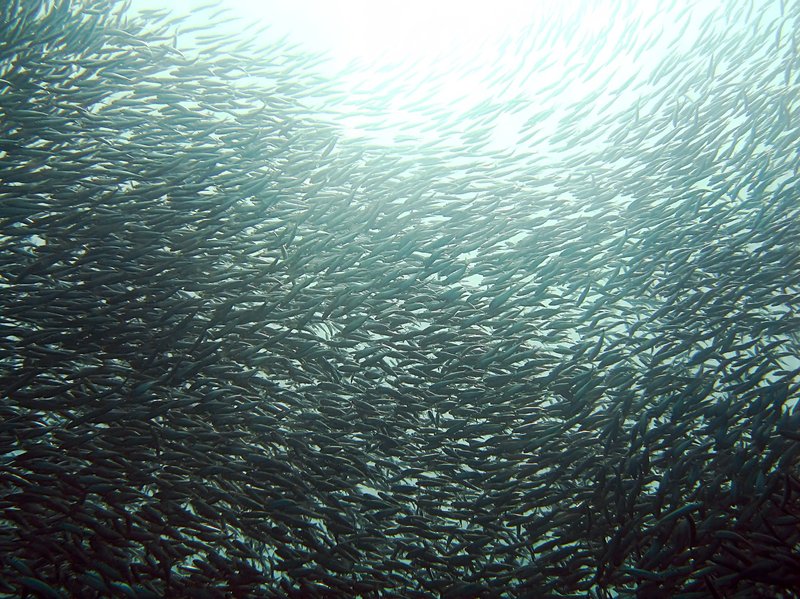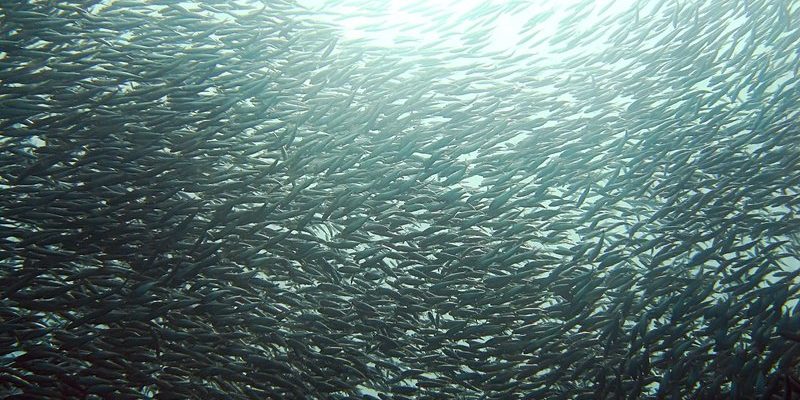
These little fish belong to the herring family and are among the most sustainable seafood choices you can make. When you dig deeper, you’ll discover that sardines have been a staple in human diets for centuries and are still a source of delight around the globe. So, grab a snack, sit back, and let’s dive into ten cool facts about sardines that might surprise you.
1. Sardines Are Named After a Mediterranean Island
You might think sardines got their name from some old fisherman’s tale, but it’s a bit more straightforward than that. The term “sardine” actually comes from the island of Sardinia in Italy, where these fish were once abundant. In fact, the island’s coastal waters were so rich in sardines that the name eventually stuck.
This little bit of history reflects the importance of sardines in Mediterranean cuisine, and their popularity skyrocketed during the 19th century, particularly in France and Spain. Sardines became a common food item, often preserved in oil, which made them easy to transport and store. Today, that tradition continues, with preserves remaining a beloved delicacy worldwide.
2. Packed with Nutrients
Here’s the thing: sardines are more than just tasty; they’re also incredibly nutritious. A single serving of sardines provides a hefty dose of omega-3 fatty acids, which are essential for brain health and reducing inflammation. The health benefits don’t stop there. They’re also a great source of protein, calcium, and vitamin D, all crucial for maintaining strong bones and a healthy immune system.
If you’re looking to add more nutrients to your diet, sardines are an excellent option. They can be eaten straight from the can, tossed in a salad, or mixed into pasta dishes. Honestly, they’re versatile, tasty, and good for you!
3. A Sustainability Superstar
Sardines are champions in the sustainability game. Unlike many fish species that are overfished, sardines reproduce quickly and have a high population turnover. This means they can replenish their numbers faster than we can catch them. Many fishing practices for sardines are regulated, ensuring that their populations remain healthy.
When you choose sardines, you’re not just doing your health a favor; you’re also making an eco-friendly choice. Look for brands that source their sardines from well-managed fisheries, and you can feel good about your seafood decisions. It’s a win-win!
4. They’re Versatile in the Kitchen
If you think sardines are limited to just being a snack, think again. These little fish can jazz up a variety of dishes. You might be wondering how to incorporate them into your meals. Here are a few ideas:
- On a salad: Toss them into a mixed green salad for added protein.
- On toast: Spread some avocado on whole-grain bread, and top it with sardines for a gourmet toast.
- In pasta: Mix them into pasta dishes with tomatoes and garlic for a quick, delicious meal.
Sardines can elevate your meals effortlessly, bringing new flavors and textures to your dining table.
5. A History of Canning
Canned sardines have been a staple since the early 19th century, when advancements in canning technology made it possible to preserve food for longer periods. The first canned sardines were produced in France and quickly gained popularity around Europe and beyond. This method of preservation allowed sardines to be transported long distances without spoiling, making them a vital food source during times of war and famine.
Today, when you pull a can of sardines off the shelf, you’re not just getting a meal; you’re partaking in a tradition that’s over 200 years old. How cool is that?
6. They’re Not Just for Humans
Sardines aren’t just food for people; they play a crucial role in the marine ecosystem. As forage fish, they serve as a primary food source for larger predators like dolphins, seals, and seabirds. The ripple effect of their presence in the food chain is significant, and their abundance helps maintain the overall health of the ocean environment.
This interconnectedness is a reminder that when we choose to eat sardines, we’re also supporting a balanced ecosystem. Eating sustainably now is vital for future generations.
7. Sardines and Their Amazing Schools
Have you ever seen a school of sardines swimming together? It’s quite a sight! Sardines are known for forming large, synchronized schools. They do this primarily as a defense mechanism against predators. By moving in unison, they create a confusing spectacle that can deter larger fish looking for a meal.
This fascinating behavior also highlights the social nature of sardines. They rely on their schools for protection and communication, showcasing how even small fish can display complex social structures.
8. The Sardine Life Cycle is Quick
Sardines have a remarkably fast life cycle, which contributes to their sustainability. They typically reach reproductive maturity in just a year, and can live for up to five years. During spawning season, a female sardine can lay hundreds of thousands of eggs! This rapid growth and reproduction rate is why sardines are so resilient, even in the face of fishing pressures.
Understanding their life cycle gives us insight into how important it is to maintain sustainable fishing practices. If we manage their populations wisely, we can enjoy sardines for years to come.
9. Cultural Significance Around the World
Sardines aren’t just a meal; they hold cultural significance in many countries. In Portugal, for instance, grilled sardines are a summer staple celebrated during the Festa de Santo António. They come alive on the streets, grilled over open flames, filling the air with delicious aromas.
In Japan, sardines called “iwashi” are used in a variety of dishes, from sushi to traditional soups. This fish is treasured for its taste and versatility. So, whether you’re in Europe or Asia, sardines bring people together through their rich culinary heritage.
10. They’re Surprisingly Affordable
Let’s talk about cost because who doesn’t love budget-friendly food? Sardines are often one of the most affordable seafood options available. A can of sardines can serve as a nutritious and delicious meal without breaking the bank. Plus, you get a lot of bang for your buck in terms of nutrients!
So, if you’re looking to eat healthily without spending too much, sardines are a fantastic choice. They’re packed with benefits and can easily fit into anyone’s dietary plan.
In Conclusion
Sardines might be small, but they bring a boatload of fascinating stories and benefits to the table. From their sustainable nature to their significant role in various cultures around the world, these little fish deserve recognition. The next time you reach for a can of sardines, remember that you’re not just enjoying a tasty snack; you’re partaking in a rich history and making a sustainable choice.
So whether you’re enjoying them on toast or as part of a gourmet dish, sardines are a little powerhouse you should definitely keep in your kitchen. Happy munching!

